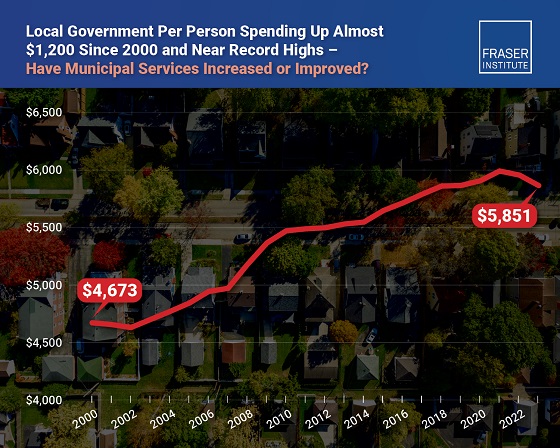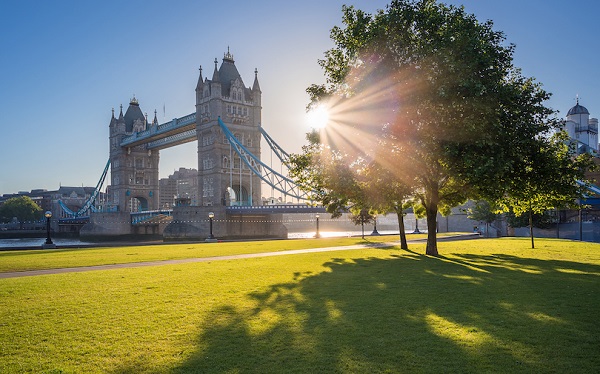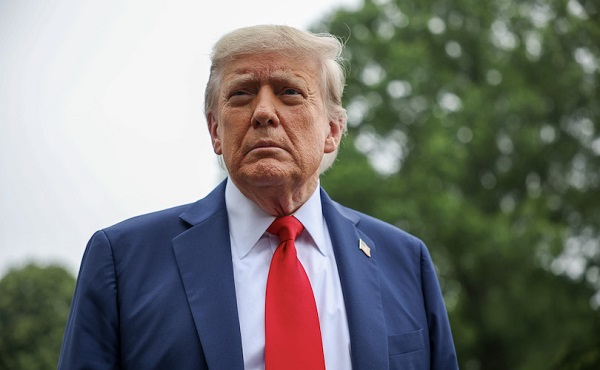Fraser Institute
Emperors of woke have no clothes and conservatives should say so

From the Frontier Centre for Public Policy
The major finding is that in Great Britain, Canada and the United States roughly one third of the population accept “woke” (progressive) views, while roughly two thirds reject those views.
However — and this is alarming — in all three countries that woke one-third controls all of the major institutions. The mainstream media, universities and civil service, for instance, are firmly controlled by the one-third woke.
Why do Conservatives go along with woke ideas, woke norms and above all woke people?
One of these days we’re going to be really sorry we didn’t stand up to this nonsense, when the proverbial little boy calls out that the emperor has no clothes. Men can be women? C’mon! You didn’t call that out at the time? Why not?
This is the question posed by Professor Eric Kaufman of England’s University of Buckingham. Kaufman, also an associate at the Ottawa-based Macdonald Laurier Institute, is a Canadian who has been living and teaching in England for the past 25 years. He has recently completed a survey on “wokeness.” (As reported here.) He was also interviewed by National Post’s rising star, Jamie Sarkonak.
Kaufman’s survey has important findings, particularly for Canada. The major finding is that in Great Britain, Canada and the United States roughly one third of the population accept “woke” (progressive) views, while roughly two thirds reject those views.
However — and this is alarming — in all three countries that woke one-third controls all of the major institutions. The mainstream media, universities and civil service, for instance, are firmly controlled by the one-third woke.
Rudi Dutschke’s long march through the institutions has arrived.
But even more concerning for Canadians should be Kaufman’s findings that pertain specifically to Canada.
That’s because he finds that while Great Britain’s Conservatives and America’s Republicans are ferociously pushing back against the extreme wokeness that is now so evident in all three countries, that is really not happening in Canada. Instead, Conservatives here have tended to knuckle under to the wokeness the Liberals so aggressively push. Any pushback has been extremely timid.
Why? How can that be? If Kaufman is right that at least two thirds of Canadians reject wokeism why is it that they have no one to represent their views?
- Is this the reason why Canada has now gained an international reputation as one of the most woke nations on earth?
- Where a Chief Justice actually feels comfortable about receiving no pushback when he claims that his Supreme Court is “the most progressive in the world”?
- And our prime minister is universally mocked as the wokest of the woke?
Does the timidity of the Conservatives on woke policies explain why the Canada we knew during the Harper and Chretien years seems to be slipping away from us?
If Kaufman’s findings are accurate, and our Conservatives are indeed submitting to woke policies — instead of representing the two thirds of Canadians who don’t want those policies — we should ask why.
Part of the reason would certainly be that the Liberals and the NDP have at every national election dishonestly attempted to use ‘socially conservative’ issues against all conservative parties — Reform, Alliance or today’s Conservative Party of Canada.
These progressive attacks were entirely spurious: conservatives have consistently stayed away from any discussion of limiting abortion access, or reversing gay marriage rights. Yet, the suggestion of a secret agenda of radical reforms is trotted out at every election, and in some eastern swing ridings appears to have been effective in keeping seats out of conservative hands.
Perhaps not surprisingly then, conservatives have consistently preferred to concentrate on bread and butter issues, and avoid the culture wars now raging.
However, with an increasingly assertive left insistent on imposing a woke agenda — even to the extent of approving a 50-year-old man sharing a locker room with teenage age girls, this preference to stay out of the fray is no longer available to them.
The example of Scott Moe’s introduction of his parents’ rights legislation is a clear sign that provincial conservatives realize that they must enter the fray. So is Alberta Premier Danielle Smith’s statement that in Alberta, sex-change operations on children under 18 years of age will not be allowed. (A decision that surprised many, given the premier’s known libertarian predilections.)
In Ontario, education minister Stephen Lecce said last year that “parents must be fully involved and fully aware of what’s happening in the life of their children.” And let’s not forget that all this started in New Brunswick, when Premier Blaine Higgs made what looks now to be a modest proposal, that children under 16 would need parental permission to change their gender at school by switching names and pronouns.
In other words, provincial politicians get it. (At last.) Federal Conservatives should go do likewise.
So what should they say?
Here are three possible responses to woke policies — on the trans issue, indigenous issues and immigration.
There is no official list of woke beliefs, but probably the most extreme is the trans issue. Woke politicians state as a fact that a man who identifies as a woman is in fact a woman. Although this claim is quite astounding to the non-woke — who know it to be untrue — the woke accept it as gospel. Prime Minister Trudeau himself famously tweeted, “A trans woman is a woman.”
If tweets were just words in the blogosphere this wouldn’t matter. However, when the nation’s leader says the words they have consequences. So, Canada now has men in women’s prisons, men in women’s sports and most alarmingly — children having body parts removed and being administered life-altering drugs — all based on this single nonsensical woke belief that men can become women by saying so.
The Conservatives should directly confront this dangerous nonsense. Obviously, they should craft their message in measured tones. But this can be easily accomplished, when the woke belief they are correcting is so obviously wrong.
Here is an example of a completely factual, scientifically accurate and measured statement that would probably win the approval of — if Kaufman is right — two thirds of Canadians: “A trans woman is not a woman. Conservatives respect trans people and respect their right to live their lives as they choose. However, that does not include their admission into women’s only places, such as crisis centres and jails or entry into women’s sports.”
The indigenous issue is Canada’s version of wokeism’s central belief — namely critical race theory — we see playing out to the south of us.
This is the woke belief that race is all important; that any differences and disparities between races is the result of systemic racism; and that governments must aggressively erase all such differences by the use of affirmative action type policies.
For the one third it has completely displaced the Martin Luther King “content of character” philosophy that has been gospel with the two thirds for more than half a century.
Canada’s woke version regards all indigenous Canadians as being completely different from other Canadians. According to this eugenics-like view anyone born to indigenous parents, or even partly indigenous parents, has some innate ecological awareness and abilities that non-indigenous people lack. They also — uniquely among every other racial or ethnic group on the planet — always tell the truth. Their claims must be taken as the truth.
Professor Hymie Rubenstein coins the term “indigenous exceptionalism” in From Truth Comes Reconciliation to describe this unusual woke belief. The most extreme example of this woke indigenous belief can be seen in the now three-year-old claim that 215 indigenous children were killed under sinister circumstances at the Kamloops Indian Residential School and then secretly buried by the priests and nuns who had supposedly killed them.
To make this claim even more bizarre it was claimed that children “as young as six” were forced to dig the graves.
Apart from a radar report showing soil disturbances that could just as easily be tree roots as graves, this baseless claim was not only taken seriously by our woke government, but actively promoted. Not only did the federal government lower flags for six months, they promised $320 million to any other indigenous communities who wanted to make similar baseless claims. Of course, many quickly did.
These “murder and secret burial” stories followed years of steadily escalating exaggeration of the harm done at residential schools. While there is no doubt that many children had bad experiences at residential schools, there had previously been a recognition that many children had received educations there that would otherwise have been denied to them. However, the stories of horror were ramped up, bit by bit, until many Canadians were ready to accept the preposterous Kamloops claim and the others that followed like clockwork after the Liberals incentivised them with the $320,000,000.
By now, most of the two thirds probably realize that they haven’t been told the truth by the Trudeau government or the mainstream media. The Conservatives need not be so afraid of being called “anti-indigenous” or “anti-reconciliation” when addressing this topic. Conservative opposition leader Pierre Pollievre made a good start when he said, “Canadians deserve to know the truth,“ and stressed the need for historical accuracy.
However, he then went on to pander embarrassingly to the woke view, using their language about the “horror” of residential school. That is not historical accuracy at all.
Here is the kind of thing Conservatives should say about residential schools:
“There is no doubt that many indigenous children were harmed at residential schools. They have been compensated and they deserve every penny of that compensation. There is also no doubt that there were some bad apples who taught and worked at the institutions. However, many indigenous children received educations that would otherwise have been denied to them. And the great majority of the priests, nuns, ministers and employees at the school were decent people who did their jobs honestly and well. That too should be recognized.”
Finally, and probably the most important issue of all — immigration. The woke view, as articulated by the PM in the earliest days of his new administration is that Canada is a post-national nation. No one seemed to understand the implications of what he was saying — possibly including the PM.
But when he tweeted out that Canada was open to anyone who wanted to come the implications started to become clear: a “post national” state doesn’t have borders… Anyone is welcome to simply walk in.
This is a fundamental belief of the woke. It is also an absolutely ruinous idea for any nation that wants to continue functioning. We see today how this woke no-borders idea is playing out in America. Our cold winters save us from the huge influxes seen there, but the millions coming to Canada are making houses unaffordable anyway and putting enormous pressure on services for Canadians and new immigrants alike.
Conservatives should not be afraid to call the woke “no borders, unrestricted immigration policy” crazy, because that is what it is.
Here’s a possible talking point they could use:
“Canada is a nation of immigrants. We have always needed immigrants, and we always will. We welcome new immigrants from all parts of the world. However, in the past few years too many have come too fast. The pressure on housing affordability and services are hurting both resident Canadians and new immigrants alike. For that reason in the first year after we take power there will be a one-year moratorium on new immigration. During that time we will both implement policies to make houses more affordable and determine what immigration numbers should be in the next decade. Canada is not a post-national state with no core identity. It is a nation with a distinct culture, an honourable history and it needs borders and a policy of controlled immigration to preserve that culture and identity.”
I think that the two thirds would welcome such an approach. And vote for it.
We don’t have to live with ignorance enthroned.
Brian Giesbrecht, retired judge, is a senior fellow at the Frontier Centre for Public Policy. First published here.
Business
Massive government child-care plan wreaking havoc across Ontario

From the Fraser Institute
By Matthew Lau
It’s now more than four years since the federal Liberal government pledged $30 billion in spending over five years for $10-per-day national child care, and more than three years since Ontario’s Progressive Conservative government signed a $13.2 billion deal with the federal government to deliver this child-care plan.
Not surprisingly, with massive government funding came massive government control. While demand for child care has increased due to the government subsidies and lower out-of-pocket costs for parents, the plan significantly restricts how child-care centres operate (including what items participating centres may purchase), and crucially, caps the proportion of government funds available to private for-profit providers.
What have families and taxpayers got for this enormous government effort? Widespread child-care shortages across Ontario.
For example, according to the City of Ottawa, the number of children (aged 0 to 5 years) on child-care waitlists has ballooned by more than 300 per cent since 2019, there are significant disparities in affordable child-care access “with nearly half of neighbourhoods underserved, and limited access in suburban and rural areas,” and families face “significantly higher” costs for before-and-after-school care for school-age children.
In addition, Ottawa families find the system “complex and difficult to navigate” and “fewer child care options exist for children with special needs.” And while 42 per cent of surveyed parents need flexible child care (weekends, evenings, part-time care), only one per cent of child-care centres offer these flexible options. These are clearly not encouraging statistics, and show that a government-knows-best approach does not properly anticipate the diverse needs of diverse families.
Moreover, according to the Peel Region’s 2025 pre-budget submission to the federal government (essentially, a list of asks and recommendations), it “has maximized its for-profit allocation, leaving 1,460 for-profit spaces on a waitlist.” In other words, families can’t access $10-per-day child care—the central promise of the plan—because the government has capped the number of for-profit centres.
Similarly, according to Halton Region’s pre-budget submission to the provincial government, “no additional families can be supported with affordable child care” because, under current provincial rules, government funding can only be used to reduce child-care fees for families already in the program.
And according to a March 2025 Oxford County report, the municipality is experiencing a shortage of child-care staff and access challenges for low-income families and children with special needs. The report includes a grim bureaucratic predication that “provincial expansion targets do not reflect anticipated child care demand.”
Child-care access is also a problem provincewide. In Stratford, which has a population of roughly 33,000, the municipal government reports that more than 1,000 children are on a child-care waitlist. Similarly in Port Colborne (population 20,000), the city’s chief administrative officer told city council in April 2025 there were almost 500 children on daycare waitlists at the beginning of the school term. As of the end of last year, Guelph and Wellington County reportedly had a total of 2,569 full-day child-care spaces for children up to age four, versus a waitlist of 4,559 children—in other words, nearly two times as many children on a waitlist compared to the number of child-care spaces.
More examples. In Prince Edward County, population around 26,000, there are more than 400 children waitlisted for licensed daycare. In Kawartha Lakes and Haliburton County, the child-care waitlist is about 1,500 children long and the average wait time is four years. And in St. Mary’s, there are more than 600 children waitlisted for child care, but in recent years town staff have only been able to move 25 to 30 children off the wait list annually.
The numbers speak for themselves. Massive government spending and control over child care has created havoc for Ontario families and made child-care access worse. This cannot be a surprise. Quebec’s child-care system has been largely government controlled for decades, with poor results. Why would Ontario be any different? And how long will Premier Ford allow this debacle to continue before he asks the new prime minister to rethink the child-care policy of his predecessor?
Business
Municipal government per-person spending in Canada hit near record levels

From the Fraser Institute
Municipal government spending in Canada hit near record levels in recent years, finds a new study by the Fraser Institute, an independent, non-partisan Canadian public policy think-tank.
“In light of record-high spending in municipalities across Canada, residents should consider whether or not crime, homelessness, public transit and other services have actually improved,” said Austin Thompson, senior policy analyst at the Fraser Institute and author of The Expanding Finances of Local Governments in Canada.
From 2000 to 2023, per-person spending (inflation-adjusted) increased by 25.2 per cent, reaching a record-high $5,974 per person in 2021 before declining slightly to $5,851 in 2023, the latest year of available data.
During that same period, municipal government revenue—generated from property taxes and transfers from other levels of government—increased by 33.7 per cent per person (inflation-adjusted).
And yet, among all three levels of government including federal and provincial, municipal government spending (adjusted for inflation) has actually experienced the slowest rate of growth over the last 10 years, underscoring the large spikes in spending at all government levels across Canada.
“Despite claims from municipal policymakers about their dire financial positions, Canadians should understand the true state of finances at city hall so they can decide whether they’re getting good value for their money,” said Jake Fuss, director of fiscal studies at the Fraser Institute.
The Expanding Finances of Local Governments in Canada, 1990–2023
- Canada’s local governments have experienced substantial fiscal growth in recent decades.
- Revenue and expenditure by local governments—including municipal governments, school boards, and Indigenous governments—have increased faster than population growth and inflation combined. From 1990 to 2023, real per-capita revenue rose by 32.7%, and expenditure by 30.0%.
- Local governments represent a significant component of Canada’s broader public sector. In 2023, net of inter-governmental transfers, municipal governments and school boards accounted for 18.6% of total government expenditure and 11.1% of revenue.
- Despite this growth, local governments’ share of overall government revenue and expenditure has declined over time—especially since the COVID-19 pandemic—as federal and provincial budgets have expanded even more rapidly.
- Nevertheless, between 2008 and 2023 the inflation-adjusted per-capita revenue of municipal governments in-creased by 10.1% and their expenditure by 12.4% , on average across the provinces.
- Over the same period, municipal governments recorded above-inflation increases in their combined annual operating surpluses, which contributed to an 88.1% inflation-adjusted rise in their net worth—raising important questions about the allocation of accumulated resources.
- In 2023, Ontario recorded the highest per-capita municipal revenue among the provinces ($4,156), while Alberta had the highest per-capita expenditure ($3,750). Prince Edward Island reported the lowest per-capita municipal revenue ($1,635) and expenditure ($1,186).
- Wide variation in per-capita municipal revenue and expenditure across the provinces reflects differences in the responsibilities provinces assign to municipalities, as well as possible disparities in the efficiency of service delivery—issues that warrant further scrutiny.
Click Here To Read The Full Study
-

 Brownstone Institute2 days ago
Brownstone Institute2 days agoFDA Exposed: Hundreds of Drugs Approved without Proof They Work
-

 Energy1 day ago
Energy1 day agoChina undermining American energy independence, report says
-

 Business1 day ago
Business1 day agoTrump on Canada tariff deadline: ‘We can do whatever we want’
-

 Automotive1 day ago
Automotive1 day agoElectric vehicle sales are falling hard in BC, and it is time to recognize reality.
-

 Business1 day ago
Business1 day agoEurope backs off greenwashing rules — Canada should take note
-

 Automotive1 day ago
Automotive1 day agoPower Struggle: Electric vehicles and reality
-

 Business3 hours ago
Business3 hours agoCanada Caves: Carney ditches digital services tax after criticism from Trump
-

 Crime3 hours ago
Crime3 hours agoSuspected ambush leaves two firefighters dead in Idaho








